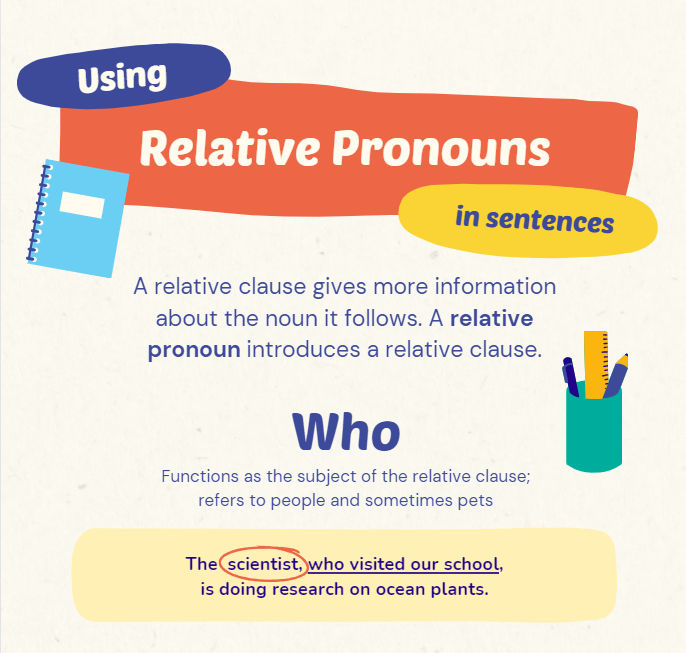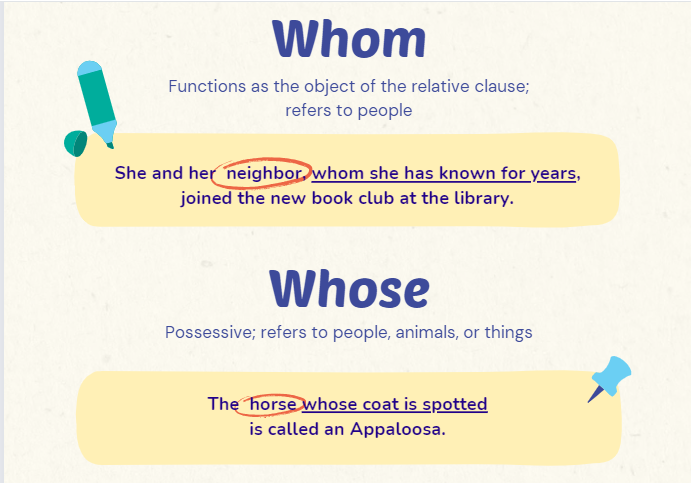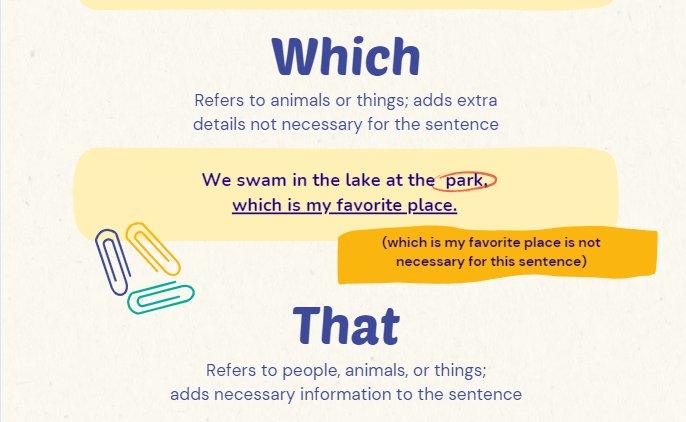Relative Pronouns Usage



Relative Pronouns Usage
Relative pronouns are used to connect clauses. They refer back to a noun or pronoun in the main clause.
Here are the common relative pronouns:
- who: refers to people
- whom: refers to people (object of a verb or preposition)
- which: refers to things
- that: refers to people or things
- whose: refers to possession
Examples:
- Who: The woman who lives next door is a doctor.
- Whom: The person whom I met yesterday is my friend.
- Which: The book which I borrowed is very interesting.
- That: The dog that I saw was very cute.
- Whose: The man whose car is red is my neighbor.
Note:
- “That” can often be used instead of “who” or “which,” especially in informal writing.
- “Whom” is less common in modern English. It is often replaced by “who.”
Here are some more examples of relative pronoun usage:
- The boy who is wearing a red shirt is my brother.
- The book that I am reading is very interesting.
- The woman whose car is parked outside is my neighbor.
- The restaurant where we had dinner last night was very good.
- The man whom I met at the party is a famous actor.
By understanding and using relative pronouns correctly, you can improve your writing and communication skills.

